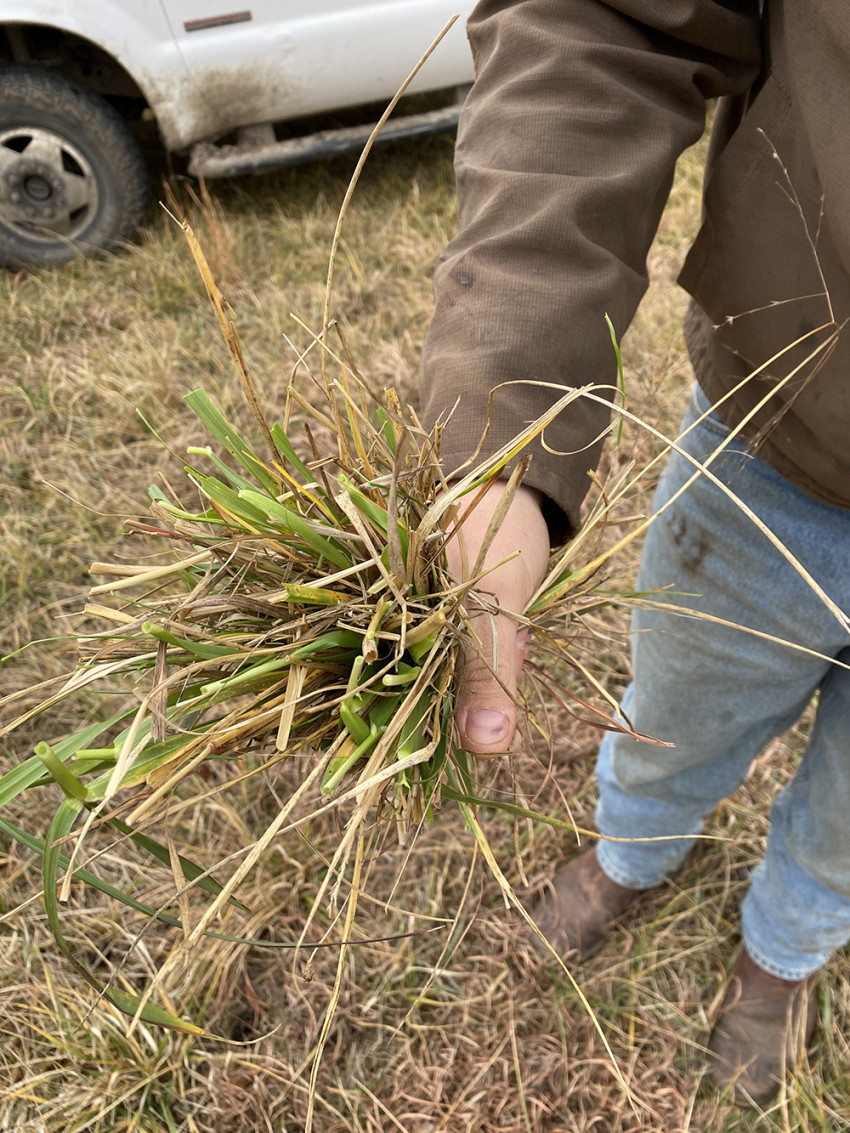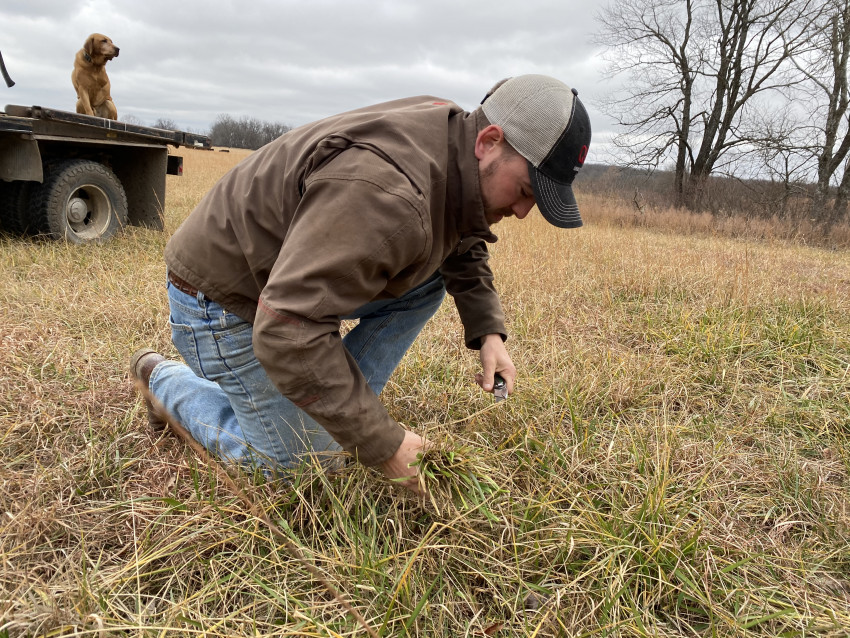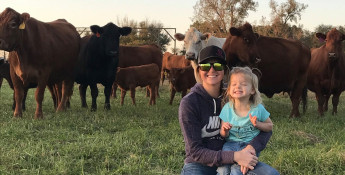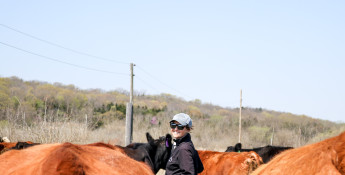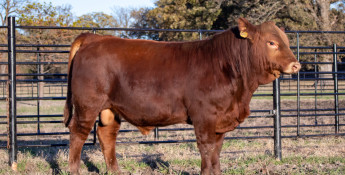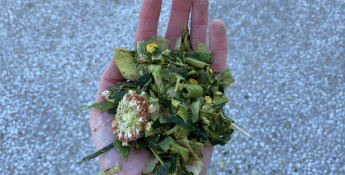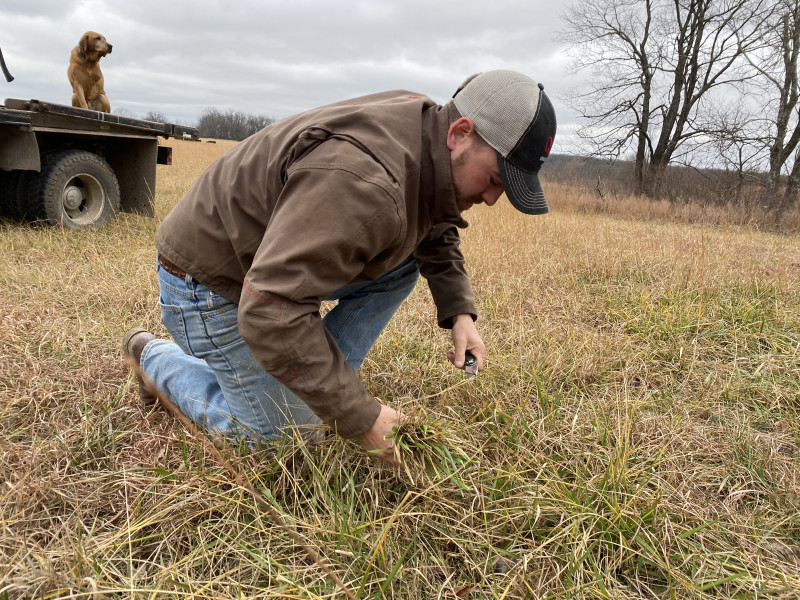By Brandi Buzzard on December 17, 2020
Grass Ranching: More Complex Than It Sounds
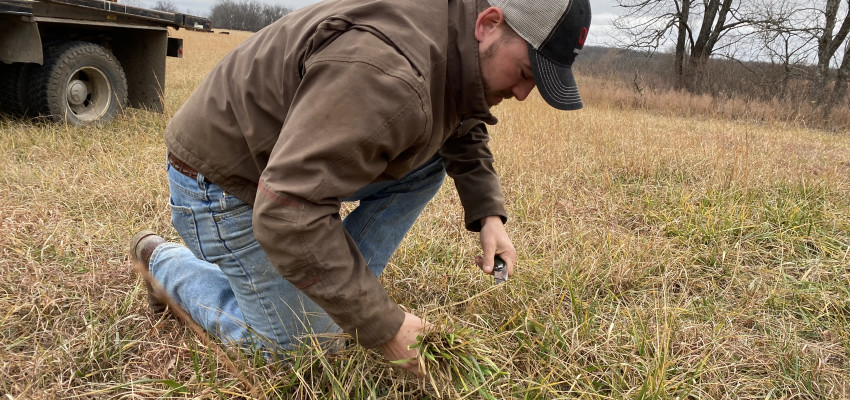
For as much time as cattle farmers and ranchers spend feeding, managing and taking care of cows, we spend almost as much time perfecting our grass ranching skills. Grass ranching isn’t near as exciting as cattle ranching because the grass never runs through a fence, gives birth in a blizzard or chases you back to the truck, but managing grass is critically important to a successful cattle ranch.
You might be thinking that’s a silly comparison, but our cows consume grass every single day, whether it be a fresh, green variety or dried and baled. From late spring through early fall, our cows graze in pastures full of, hopefully, green grass. Where we live, this lush grass is mostly fescue and provides cows with the high plane of nutrition they need to grow the baby calves inside their bellies, which are born in the fall. We collect samples from every pasture we use and send it to a plant pathology lab to determine the nutrient quality of the grass. The test results help us determine what kind of supplementation, such as mineral and protein, we need to provide the cows so their ration is adequately balanced.
From late fall to early spring, our cattle eat harvested forage, aka baled hay. We feed hay bales made from many varieties of grass including fescue, native prairie and brome. Each type of hay has a different nutrient content and is fed to a specific group of cattle based on their nutritional needs.
For example, our replacement heifers, the young females that will be joining the herd as permanent cows, need higher quality hay in the fall as we lead up to breeding season, so they receive the best bales. Conversely, our yearling bulls are on a different plane of nutrition in the fall, so they don’t require hay as high in protein as their female herd mates.
But from where does all that hay appear? It doesn’t just show up in our barnyard baled and ready to be fed. We strenuously practice rotational grazing so we can harvest hay on one pasture and let it regrow before the cows rotate back to it. We also purchase hay from other farmers who have more land and resources than we do. Lastly, we utilize cover crops, such as rye grass, to help us meet our forage needs for our herd.
This year, we planted rye grass as a cover crop on the cornfields that we chopped for silage. We planted the fields in September and with some fall moisture the grass grew about five inches before the cold of December set in. The grass will go dormant through the winter and in the spring, with sun and rain, will start to grow again. When it is about 36 inches high, we will either cut and bale it for additional forage for next fall or we may chop it and feed it as ryelage. The weather will play a large role in that decision, as it does for many of our feeding and management decisions, in general.
Regardless of how the rye shakes out next spring, a grass management plan is present on nearly every cattle farm or ranch in the nation. Farmers and ranchers utilize grass for cows because it’s a sustainable way to raise cattle. It’s a way to use human-inedible feedstuffs, ending with a highly nutritious and delicious product, beef. Bonus: a freshly cut hayfield smells a lot better than my clothes after I’ve assisted with a rare, but inevitable, calf delivery.

